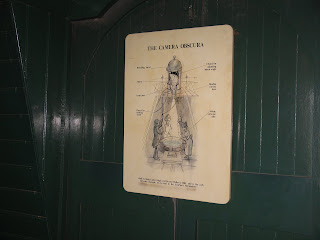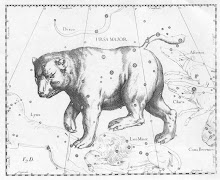Today is the second day of a conference on Earth, Air, Ocean, and Space: the Future of Exploration, at MIT in Cambridge, MA. As some of you know, this is where I did my undergraduate studies, and it has been a great enjoyment to be able to talk with three of my former professors. I also got to speak with my counterpart Director of the Massachusetts Space Grant Consortium, Prof. (and former astronaut) Jeff Hoffman, and interact with a number of researchers, students, and technology company representatives.
Actually, one of the elements that is most amazing to me about this conference is not just the range of presentations and presenters, but the demonstrations of the range of exploration environments that people are currently experiencing. Yesterday, one of the presentations was made by Astronaut Cady Coleman… from the Node 3 Cupola of the International Space Station. Really. She’s in space right now, and sent down a video discussing her experience of living and working in space. (Her husband, Josh Simpson, is a glass artist whose work is used for the National Space Grant Distinguished Service Award.)
One of today’s remote presentations is from Dana Yoerger of the Woods Hole Oceanographic Institution, who is speaking to us about the history and future of autonomous and human-occupied undersea vehicles… from a research vessel in the Gulf of Mexico studying the effects of the Deepwater Horizon oil spill. This presentation is live, and though we don’t get to see him, there are opportunities for questions and answers (the greatest barriers to advances in undersea vehicles are energy storage—battery technology—and sensor quality).
I very much appreciate that this conference highlights a number of exploration disciplines and environments, all of which are relevant to science, technology, engineering, and mathematics (STEM) education and research. Round-the-world sailing, deep sea exploration, undergraduate research design projects to find earth-like planets around other stars, and even the interaction between history and technology in the process of exploration over past human eras. Of course, many people connect to NASA not through the range of STEM disciplines and applications, but through astronauts—and MIT has even more alumni astronauts than even Purdue. (This remains an area of fierce competition between my past home and my current one.) There was a panel of six of them as part of the conference. (Yes, he is here, too.)
One of the significant issues that has been raised multiple times over this conference is the need for, and limited success of, our interactions as explorers with the public. One comment yesterday was that, for most of the public, 95% of what they learn and know about STEM research and applications comes not from the classroom, but from other sources. This suggests that much more of what we do in STEM needs to look outward, in ways that aren’t just talking to people like us. This isn’t easy for many of us, and speaking personally, I like doing the research geek thing. It’s hard for me to know how to, and what to, talk to a wide range of people about a range of STEM topics. There is still a reminder, though, to at least try. And why should we (I) do that?
The current head of the Charles Stark Draper Lab just mentioned that the average age of the engineers who designed and built the Apollo missions was 27. Space was an exciting thing for younger folks to get excited to do. Kids want to know how to become an astronaut, thinking that the answer will be about a specific class, or major, or test score. But that’s not the answer. The responses from the astronaut panel highlighted the importance of picking an area and topic that one loves, and pursing that area with passion and enthusiasm. Being a team player, and learning to work well with others to complete a mission, are absolutely essential. Some of the astronauts knew they wanted to pursue that path by watching Neil Armstrong and Buzz Aldrin; others were skilled test pilots. Others didn’t even consider such a career until after graduate school. But, in all cases, they emphasized how education, and inspiration, and mentorship helped them along the way.
This conference is emphasizing projections of the next 50 years of exploration—of air, of space, of the deep oceans. If imagine such a conference in 2061 for MIT’s bicentennial, or 2069 for Purdue’s, who’s going to be sitting on those panels? Probably not people I work with now. Most likely, it’s going to be someone who’s very young (or maybe not even born yet), who will get inspired and excited by the promise of exploring and learning things that were previously unimagined. I have no idea, but I would like to hope that maybe one of them gets to say, “I remember this Purdue professor named Caldwell talked about how much he got excited about his research and interests in space flight team performance, and I learned how much I could enjoy being an explorer using science and engineering.” As several professors on a panel just said, every research project is a journey, and each new opportunity to reflect and imagine is a potential exploration and transformation. That’s a good reason to keep trying, and keep connecting, and keep exploring.











